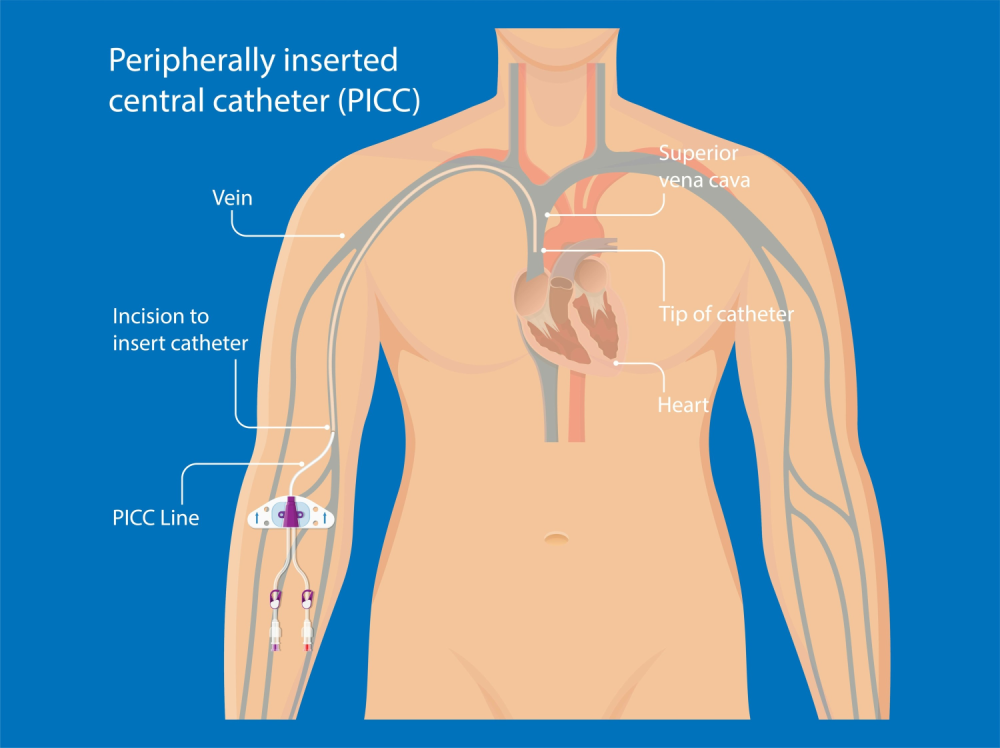What Are Central Lines?
A central venous catheter (central line) is a special type of intravenous (IV) line. A central line is a thin tube inserted into a large vein that goes to the heart. This line may be placed in your neck, chest, arm, or leg. A central line can be useful in situations requiring frequent IV medications, blood transfusions, blood draws for lab work, or IV nutrition. Your health care provider determines the location where the catheter can be safely inserted, the catheter type that you will need, and how long the catheter will be in place.

What is a Central Line-Associated Bloodstream Infection?
Central lines are helpful for taking care of you; however, they can increase your risk for infection when bacteria grow in the line and travel to the bloodstream. This is called a Central Line Associated-Bloodstream Infection (CLABSI). A CLABSI can be serious and life threatening.
How Can a CLABSI Be Prevented?
Fortunately, there are steps we can take to prevent CLABSIs. We want to remove the line as soon as possible to reduce the risk of CLABSI, so we will assess whether the line is still necessary daily. We also assess all central lines for signs of CLABSI.
Hand hygiene is the most important way that we prevent CLABSI. We also prevent CLABSI by:
- Using sterile procedures.
- Placing all central line supplies, fluids, and medicines on a clean work surface.
- Carefully handling fluids and medications given through the central line.
- Wearing gloves when handling the central line (for example, giving medications and changing the central line dressing).
- Performing daily skin treatment wipes, unless documented allergies are present, while the central line is in place during an inpatient stay.
How Can I Help Prevent CLABSI?
You have an important role in helping us to prevent CLABSI:
- Performing hand hygiene frequently, especially before touching the central line.
- Asking your visitors to perform hand hygiene before and after visiting you. They should not be touching your central line or IV tubing.
- Keeping the IV tubing off the floor. Tell a staff member if the IV tubing is on the floor so we can clean it.
- Keeping the central line and insertion site dry.
- Tell us if you have the chills, feel soreness at the central line site, or notice new drainage around the central line site.
If you have any concerns about your central line or the way it is cared for, please talk to your health care provider.
How is a CLABSI Treated?
A CLABSI is serious, but often can be successfully treated with antibiotics.
The central line may be removed if you develop a CLABSI that does not respond to antibiotics.
This information is for educational purposes only. It is not intended to replace the advice of your health care providers. If you have any questions, talk with your doctor or others on your health care team.
If you are a Gillette patient with urgent questions or concerns, please contact Telehealth Nursing at 651-229-3890.
 Home Page
Home Page
